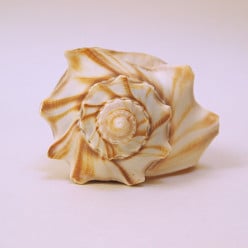Advice On Adding Sources To A Hub Please?
I received an email from HubPages about a recently published Hub, suggesting some changes that might mean it could be moved to Healdove.
One of the suggestions was as follows:
"Can you add some sources to support your information? You can create a "sources" section at the end of your article to list all of the articles/websites/etc. you consulted. For each source entry, please include article title, date of publication (if listed), author (if listed), website name, date retrieved (i.e., the date you accessed it online), and a link."
Please can someone advise me on what format this should take and/or point me to an example to follow?
I am also concerned that I used at least ten online sources during my research - should I reference and provide links to them all? I am worried that a large number of links at the end of my article might be counterproductive?
Thank you, AlisonSeriously?!? They finally realized the value of using sources! That's wonderful!
Agreed. It was always a wrong move to insist on removing blocks of references - it goes against standard practice in all creditable articles which are based on literature searches.
GDPR Deleted
I said this because they edited the sources off of some of my hubs that went onto vertical sites, sources such as more information about and definitions of autism on a page I wrote about an aspect of autism. They also edited sources off of my page about lupus skin care that included the words lupus and skin in them. Also, others have posted that their sources were removed.
GDPR Deleted
I don't know.
It really upset me because I'm uneasy about not having sources on anything that is even remotely approaching something medical. It has caused me to place all of my new writing about anything I felt needed sources or would provide a better reader experience with resources on it elsewhere. I've placed about a dozen pieces elsewhere instead of on HP since it happened because it made me uncomfortable. I don't feel comfortable knowing my credibility backup has been stripped away.GDPR Deleted
Perhaps it's a style issue.
In my experience, clicking on highlighted words in text online yields an advertisement as often as it yields more relevant information. I hate surprises, so it literally never occurred to me that most people preferred a little mystery regarding the links they click. I'm still not sure if I believe it, but just because it seems really weird to me, it doesn't mean it's not true. I'll have to investigate more.
I prefer to have the sources clearly identified as such with an explanation of how they relate to the article rather than seeing them presented as highlighted links, both as a writer and as a reader. I like to know exactly what I'm clicking on, so I prefer a brief synopsis labeled with the actual title of the article being linked to a single hyperlinked word or phrase.GDPR Deleted
Turn off your ad-block software and then you'll see the ads. There are fewer of them than there were two years ago, but they're still something one may get when clicking a word highlighted or underlined in an article. HubPages is one of the places you can find in-text ads in the form of Amazon links. They now encourage the use of in-text ads instead of the use of Amazon capsules on some hubs.
Just a few years ago, in-text ad links were so common that some people offering assistance in HubPages forums assumed those of us who wanted to use links in photo credits were trying to insert affiliate links.GDPR Deleted
Your sample is skewed compared to that of the average reader. You don't read any user-generated content on any sites similar to HubPages or on any internet-only magazines or internet-only newspapers that didn't start in print or through large, well-known organizations. You only read content from a narrow range of sources that's been funneled through professional editors. I don't expect to see text links going anywhere but other articles or sources on old, established, sites owned by print publishers or universities, but I expect to see them on the wider Internet and on sites with user-generated content.
Since text ads are a phenomenon associated with user-generated content sites like HubPages, when I see text links on such a site, they look like ads.
Are there any Squidoo survivors out there willing to back me up? Text links are a thing and they are associated with less reputable websites like HubPages and Squidoo. They provided a substantial proportion of Squidoo's income and HubPages allowed them in the form of Amazon affiliate links until recently.
Thank you Kylyssa. I hadn't worked out why I find excessive blue links annoying, and you have just explained it.
I, too, experienced that phase of the internet when in-text advertising was common and therefore I'm subconsciously suspicious when I see an in-text link. I like to see where a link is going before I click it!
Edit: HubPages still allows in-text Amazon links. In fact, they PREFER them to Amazon capsules (go figure) and are far less likely to snip them. The good thing is that now, if you create an Amazon link, it has a small orange logo in front of it.I agree. I also am annoyed by blue links because it seems a lot of times it goes to a definition of what's underlined. As hyperlinks are usually anchored to simple words it becomes irritating. Add to that the links that seem to go one place but go to another which is some kind of earning opportunity for someone else not to mention the ones that simply misdirect you or direct you to a 404 not found page and I get to the point I don't want to click any hyperlink at all.
GDPR Deleted
Or alternatively, Tessa, they DO read professional sites - but your Hubs are not on a professional site, and they know the difference.
That's very interesting. Clearly HubPages has changed its policy on this, because for a long time they've been discouraging blocks of links at the end of a hub. I'm glad they've changed their policy to what is recognised by all credible and respectable publications as being an accepted means of referencing sources.
That's exactly what I was thinking!
I've known for a while that the standards had changed specifically for HealDove. They want you to cover yourself from every angle - I think they're terrified of being sued for offering medical advice. So every time you make a claim for a treatment or supplement, you MUST provide a link to back up that claim, or they'll ask you to delete it.
As a result, some HealDove articles are a mass of blue links, which I find annoying, personally - and maybe that's why they're finally realising that putting the links at the end is a better idea.
I'm not at all sure that the same attitude pertains for the other niche sites, though.I monitor news and features on specific topics every time and most of them link to sources in the article rather than a section at the end. As a reader, I prefer to have a direct link rather than search through a block of links at the end of an article, especially if a specific research study is discussed. Oh well, to each his own.
I do like links in the text, it's just a matter of how many. Some HealDove articles look as though they have blue measles.
This is helpful, was wondering myself how to approach relevant sources.
No worries. It's not as complicated as it seems. I use a "Notes" or references section at the bottom of some of my research hubs. Simply use the website www.citefast.com or something like it. You can select APA, Chicago Style, etc. (I think HP prefers APA). Then paste the url that you used as a resource and the site prepopulates the author, website name, etc. that you want. On occasion, you may need to manually enter some information, but that's okay. Then, it formats the information cleanly. You cut and paste that information into HP.
I use superscripts (1,2,3) in the text to denote which resource is which. Hope this is helpful.Thank you, that is very helpful - I think I will just have to use the sources used at the end as you explain and not use the superscript to link to parts of the article as I collated information from more than one source for each section of the article. I hope that this will be acceptable as I have seen it done that way on other sites.
I stopped adding sources a while ago when I would get warnings that there were too many links together in the hub. I started deleting the source sections because of this when I revised my hubs. Now, it seems that is changed and they want sources. Another option is to link directly to a source mentioned in the article itself. That seems to be acceptable as many of my recent hubs have been moved to niche sites.
Carola, this is something which has very much irritated me about the changes HubPages have been requesting to get hubs featured on niche sites. They've tried to be too dogmatic on issues of presentation, rather than worrying about quality of content, which is what should matter most to them.
I must admit I've gone along with some of the changes they've asked for, but refused others including the wholesale removal of blocks of references of the kind described here. Whilst there's nothing wrong with providing links throughout the text, it is accepted and correct practice in all serious works of academic research that links / references are provided en masse at the end of the article. There's no way that HubPages or Google should object to that.
Even if it's meant that some of my hubs have not been moved to niche sites, I've preferred to keep the presentation the way I like it as a matter of principle. I'm glad I did.
I think that citing sources is essential because it adds authority and credibility to an article. I used to link to the sources I quote but that runs into issues with the powers that be because it takes readers away from the site. I provide enough information so that somebody with at least an opposable thumb can look up the original material.
This is the format I use at the bottom of each article:
Sources
•“Canada’s Black Widow: the Rosy-cheeked Killer is Back on the Streets.” Ashifa Kassam, The Guardian, March 25, 2016.
•“Canada’s ‘Black Widow,’ who Lured Lonesome Old Men to Horrible Fates, is Free again.” Yanan Wang, Hamilton Spectator, March 21, 2016.
•“The Internet Black Widow: Is this Canada’s most Dangerous Woman?” Jasmine Coleman, BBC News, March 19, 2016.
•“Internet Black Widow Breaches Three Conditions of Release from Prison, Police Say.” Keith Doucette, The Canadian Press, April 12, 2016.Thank you, Rupert and Carola - as I mentioned adding the sources was a request to (hopefully) get the Hub moved to Healdove. I have done something similar to you Rupert, except that I have added the URL (unlinked) at the end of each source so that it can be copied and pasted, but not clicked on. Could I also ask you, Rupert, from what you said, I am thinking that you do not put a superscript 1 at the end of the sentence in your article and the same at the beginning of the source entry that relates to it? I would not be able to do this in my Hub for the reasons explained, so I am hoping it is okay just to list the references at the bottom of the article?
No, I don't use a superscript reference number. If I'm quoting a source I always give credit in the text e.g. According to an article in The New York Times blah blah.. This is more a magazine-style thing than and academic paper.
Most of the time I use Google Scholar search but I tend to use academic articles. These are usually peer reviewed and Scholar has a feature that automatically formats the citation in 3 different formats.
Related Discussions
- 34
Is it immoral to "use" someone's content to create something unique?
by Melanie Palen Shebel 14 years ago
Let's say you see an article on someone's blog and website and they've got good information, but their entire article is extremely poorly structured, poorly worded, and just a gloppy mess.You could easily take the information they present and present it in a totally new way essentially entirely...
- 22
Links to sources
by Rupert Taylor 3 years ago
It is my habit to list the sources I use for each article at the end and to link to those that have an internet presence. But sometimes I get this message from HubPages:"We noticed you have a number of links grouped together. To keep your article Featured, please incorporate useful, relevant...
- 42
"Facts/stats that aren't commonly found"
by Melissa A Smith 7 years ago
I really want to speak to the editor that wrote this but there doesn't seem to be any way to contact them. I submitted an article for the niche site and I was just told "please incorporate sources at the bottom of your article for facts/stats that aren't commonly found." I would like to...
- 21
What exactly are "spammy" elements?
by Erin Day 5 years ago
The latest article I submitted didn't pass QAP because it contained "spammy elements." I'm really struggling with what that is because the only links in my articles are the sources I used. Do they want me to not cite my sources? I'm just so confused and it's really discouraging that the...
- 10
Article submitted to Soapboxie was denied how should I edit it?
by Cholee Clay 8 years ago
The email I recieved is all about link issues. I have reread the article about half a dozen times now and I can't find any links. I found minor spelling and grammar errors, which were not changed or addressed that I fixed; but for the life of me I can't find anything else wrong with the article....
- 24
How do you put the references section in your hubs?
by LM Gutierrez 10 years ago
Hi,I have been in hubpages for less than a week, and I have been munching information in help pages and guides ever since. I have made a few hubs, all about medicine. Basically, my problem revolves around references. I'm itching to ask how you guys put in the reference section at the bottom of the...















